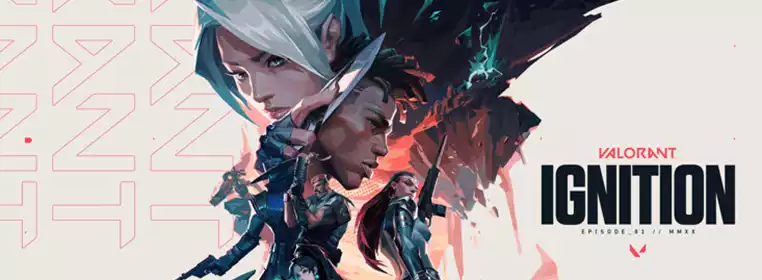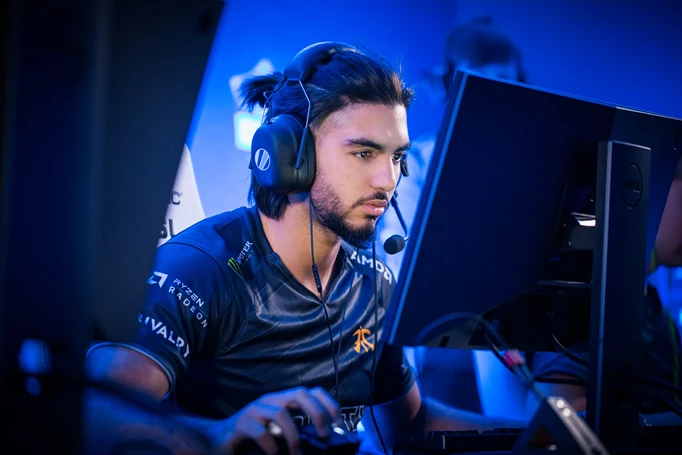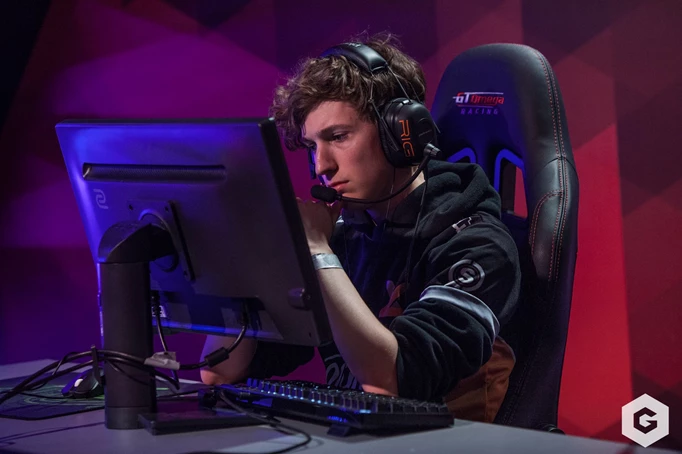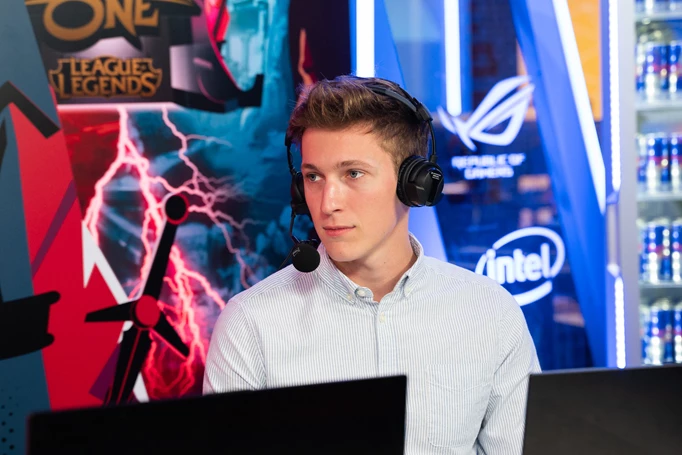VALORANT Invitationals Are Doing More Harm Than Good to the Growing Esport Scene

Scream, Hiko, Skadoodle, Brax – just a few of many giants of CSGO who have turned their attention to a new FPS, VALORANT. Riot Games’ brand new shooter game took no time to hit the ground running, racking up astronomical numbers on Twitch in the beta phase alone but it’s also provided a new home for a plethora of inactive, VAC banned, legendary and to put it bluntly, washed up FPS players from other titles.
In contrast to other First Person Shooters that preceded VALORANT such as Overwatch and Apex Legends, Riot’s new game shares its core fundamentals with CSGO – a game that’s been around for nearly eight years. So naturally, alongside the allure and promises of Riot’s capability to establish a successful esports scene and the fact the game is already so accessible for CSGO players, it makes sense that those who didn’t quite make it big in CSGO or are inactive would turn to this shiny new toy.
And thus, a symbiotic relationship was born. While VALORANT gave these players a platform to thrive on, the game was also getting more and more traction as a result of big-name players and personalities promoting the FPS through their streams and social media. But then, another important player entered the game – tournament organisers.
Riot made their approach very clear since the outset of the game’s beta, they have no interest to single-handedly construct an esports scene and will instead be seeking an organic way for the competitive side to grow – mainly through third-party and community-driven tournaments. These tournaments, especially in the beta, came in the form of Invitationals which took advantage of the fact more well-known players who moved from other FPS titles were available and keen to compete.
Now, more than two months on from the release of the beta, organic communities are beginning to grow in several regions across the world but what effects has the wave of ‘Invitationals’ had on the scene? And what would be the best way forward to facilitate and harness the influx of players to make the game successful as an esports without sacrificing talent?

 Click to enlarge
Click to enlargeAll publicity is good publicity
Any game that’s attached to a publisher as successful and well-known as Riot is bound to have a decent chance of excelling but VALORANT created a very unique situation that ostensibly united the First-Person Shooter genre and its audience. While it’s made up of predominantly talent from the CSGO scene, we also saw big names from the world of Overwatch, Apex Legends and Fortnite move over to the game as streamers and pro-players.
Unlike games where you have to build a player-base and identify top talent over time, VALORANT was the absolute perfect game to showcase from the outset precisely because so many already-established players were involved in the scene from the get-go. From Shroud and Nadeshot to pro players like Stewie2k and EliGe, they helped to create a professional standard of competition that warded off any potential undesirable structures and their availability and willingness to take part in semi-competitive tournaments also helped the game boost in terms of viewership.
- Read More - Korea Plays VALORANT A Little Differently
It’d be difficult to measure the exact stat or percentages of people that these streamers, big personalities and well-known players brought in or converted from other games but it’s safe to say that in order for any esports scene to thrive, it needs a healthy growth of player-base as well as viewership and that’s exactly what Valorant managed to accumulate. Of course, the easiest way to facilitate a situation where the most popular streamers and players would get to play against each other is through invitationals. Qualifiers require premade teams and there’s a chance that they might not even make it to the main event, so naturally, it made sense to pick the desirable talents, give them a spotlight in a tournament and see what happens.
From G2’s Invitational to Fnatic’s scouting tournament to Twitch Rivals, these competitions dominated the beta and the latter also took centre stage worldwide upon the game’s release. Twitch Rivals racked up 736,812 viewers over three days, that’s not counting the numbers from the players’ streams themselves. With an average of 20,666 viewers over 37 hours of airtime on the official Twitch Rivals channel, it’s not hard to see why the Invitationals model works. No one can dispute that these invitationals are growing the competitive scene – the more popular the game gets, the more demand and appetite there seems to be for talent as well as tournaments on the whole but at what price?

 Click to enlarge
Click to enlargeGatekeeping
On the surface, setting up tournaments to showcase the biggest and most popular personalities brings in a lot of eyeballs and attention to the game, but it has ultimately, inadvertently, done something much more sinister to the infrastructure of the competitive VALORANT scene.
Due to the fact only players and streamers with pre-existing audiences are being invited to these tournaments, the majority of the competitive player-base are missing out on opportunities to grow and get recognised. More often than not, the streamers and players who do get invited to play have full autonomy to choose their own teams, meaning they usually bring in their friends or other creators they already know instead of looking or scouting for other talents.
VALORANT player Jake “Boaster” Howlett, who participated in two G2 Invitationals, the Fnatic scouting tournament and two Twitch Rivals (where he actually managed to win the first one), has identified some issues when it comes to how troublesome the gatekeeping aspect can be.
Right now, especially since Riot aren’t getting involved with VALORANT yet, the scene seems to be benefiting those who already have an established fan base or community. It seems like those guys who have their reputation probably from CSGO, are often getting more opportunities than people who haven’t.
There’s probably a bunch of players out there, up and coming that no one knows about because the big tournaments haven’t really allowed them to come out which means it’s really difficult right now to find lesser-known talent. It poses a big issue if you’re for people to form a team. You’re basically forced to have to team with people you already know from other shooter games and if you didn’t want to do that, it’s very hard to try and find new talent when they aren’t given the same opportunities.
I think there’s a lot developing right now behind the scenes. Twitch Rivals obviously took the spotlight as one of the biggest, if not the biggest tournaments so far but it had zero, actual teams in it so it’s mainly just personality and community-driven. Once teams start coming up through other qualifiers and other tournaments I believe people will naturally be more interested in those instead of your Twitch Rivals.
Boaster makes a few points here and the last one is spot on – in fact, some of the VALORANT viewers are already leaning towards more competitive models as opposed to the Invitationals. CSGO reporter neL recently commented on G2 owner Ocelote’s Twitter post regarding their latest invitational with:
And neL’s sentiment was echoed by pro players and fans. Even the Counter-Strike legend Get_Right weighed in on the matter:
However, even if a proportion of the community and fans prefer to see more competitive tournaments with qualifiers and actual teams, those ones just aren’t doing anywhere near the same numbers as invitationals like Twitch Rivals.
More importantly, as Boaster pointed out, if tournament organisers keep inviting the biggest and most popular talents, which so far, seems to be the same group of people, it completely overshadows the possibility of anyone outside the selected few to get noticed. Taking a look at the Tier 1 organisations’ VALORANT signings so far, the vast majority of them are indeed players who are already-established or have participated in a number of invitationals – of course, it’s not to say that they’re not good players but when selection is so heavily influenced by how popular someone is, it certainly undermines a certain level of competitive integrity as well as shaping the standard of competition at the top.
Is there a solution?
Of course, there are plenty of tournaments and teams outside of these invitationals and communities are starting to form at all levels of the game right now. Outside of scrimming and team practice, it seems that the majority of the ‘top-level’ players are in favour of using the FACEIT platform over VALORANT'S solo queue for a better matchmaking experience. Most notably, VALORANT Pro Division harbours the most active player base at the moment across various levels of competition.
On the surface, it seems like FACEIT could be a strong player in creating a healthy and competitive ecosystem for VALORANT but Fabio Floris, the Chief Product Officer at FACEIT revealed that they are not involved with the game yet and have no plans in the immediate future to intervene.
He said: “We are still waiting, observing. I mean the general landscape of the competitive VALORANT scene hasn’t been defined yet so it’s hard to understand when it comes to esports what could be the type of format that can bring value.”
Essentially, for those who aren’t familiar with the FACEIT platform, much like the FPL in CSGO, players in the VALORANT Pro Division can play the game through a match-making system that whittles out random, casual players. Queuing as a solo player, you will be sorted into private lobbies with nine others in the division and each match earns you points which contributes to your position in the leaderboard.
While the VALORANT Pro Division on the FACEIT platform is certainly a better solution for talent spotting and growth, it also has a similar issue when it comes to gatekeeping. Top-level players, or once again, more well-known and popular players are separated into an invite-only league. This is to make sure the level of competition is at the highest possible standards so you won’t be playing against lower-ranked players but this troubling system means if you are not well known, it’s unlikely you’ll receive an invite and without one, it’s unlikely you’ll get noticed and picked up.

 Click to enlarge
Click to enlargeBoaster, who is playing in the pro’s tier of the Division said: “I’m not a huge fan of the hubs that are solely invitational because it affects the talent pool coming up especially if it’s anything like Counter-Strike where you’re only allowed one in a month just to get into FPL. To even get into FPL you had to play around 150 games a month if you have a team you can’t really do that. You also had to have about a 53% win rate which doesn’t seem too hard but when everyone else is fighting for it as well, it’s really hard."
“I don’t know if I agree with having an elitist group of players by invite-only because it’s going to be impossible to spot new talent. The only way then for a talent to shine is either somehow qualify for the FACEIT interface which was the case in CSGO. If you made it to FPL in CSGO then teams were likely to look at you and consider picking you up. You really have to be lucky in that scenario and be in the right place at the right time.”
- Read More - Sentinels' VALORANT Team Has Some Growing To Do
A quick look at the VPD Twitter page also tells a similar story of favouritism. It’s littered with promotion for the League which only more or less feature ‘bigger’ names such as Scream and thousands of other players who play in their Division are seemingly, totally, ignored. Of course, this isn’t an official FACEIT affiliated league but the gatekeeping approach to only promote already-established talent is troubling and just another setback for the already temperamental Valorant scene.
But what is the solution, and how do we, as a community develop one? Well, FACEIT’s Fabio believes it’s not up to the community.
It really depends on the strategy the publisher wants to apply. They could adopt the franchise model as they have in the NA LCS or LEC or have other approaches. There are different things happening right now which people can say it’s good or bad but at the end of the day, it’s really down to the publisher and what their strategy is.
How an esports ecosystem is going to be set up is a choice of the publisher, based on what they decide and what actions they decide to take, there are some solutions that can work. There are, of course, upsides and downsides to this but no matter what, we will aim to provide open tools and an open platform for everyone to easily coordinate competitive spirit – that’s something we will always do.
Images via Riot Games, ESL, Gfinity and DLC
